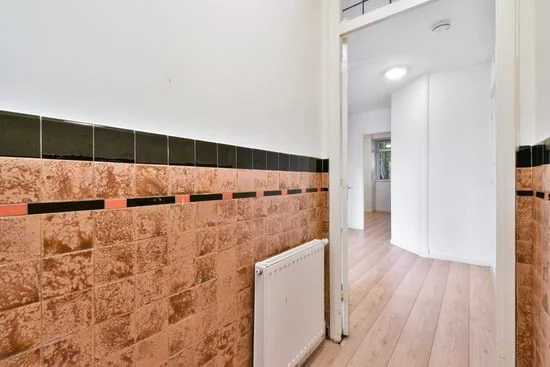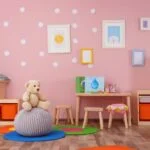Are you looking to give your iPhone’s home screen a fresh new look? In this article, we will explore the exciting world of iOS 14 home screen customization and provide you with a step-by-step guide on how to add widgets, customize app icons, and create aesthetic themes for your home screen.
With the release of iOS 14, Apple has introduced a range of new features that allow users to personalize their iPhone home screens like never before. From adding customizable widgets to organizing and arranging your apps in creative ways, the possibilities for creating a unique and personalized home screen are endless.
We will start by giving you an overview of the new widgets feature in iOS 14 and guide you through the process of adding them to your home screen. Additionally, we will explore the various customization options available for app icons, offering tips and tricks for creating stunning aesthetic themes that reflect your personal style. Furthermore, we will showcase creative examples of customized home screens to inspire you as you embark on your own customization journey.
Whether you’re a seasoned iOS user or new to the world of iPhone customization, this article will provide you with all the information you need to embrace personalized home screen design in iOS 14. So grab your iPhone and get ready to transform your home screen into a stunning reflection of your style and personality.
Understanding the New Widgets Feature in iOS 14
Customizing your iOS 14 Home Screen goes beyond adding aesthetic app icons. The new widgets feature in iOS 14 allows users to add personalized and informational widgets to their home screens. These widgets can display a variety of content, from weather updates and calendar events to fitness activity and news headlines. Understanding how to utilize these widgets effectively can transform your home screen into a dynamic and functional hub.
Choosing the Right Widgets
Before diving into the world of widget customization, it’s important to understand which widgets are available for use. iOS 14 offers a variety of stock widgets for built-in apps like Calendar, Weather, Music, and more. Additionally, third-party apps may also offer their own custom widgets for users to add to their home screens.
Adding Widgets to Your Home Screen
To add widgets to your home screen in iOS 14, simply long-press on an empty area of the screen until the apps start jiggling. Then, tap the “+” button in the top-left corner and select “Widget” from the menu that appears. From there, you can browse through available widget options and choose the one that best fits your needs.
Customizing Widget Size and Placement
One of the unique features of iOS 14’s widget system is the ability to customize the size and placement of widgets on your home screen. When adding a widget, you can select from different size options depending on how much space you want it to occupy. You can also drag and drop widgets around your home screen to arrange them according to your preference.
By understanding how to leverage the new widgets feature in iOS 14, you can take your home screen customization to a whole new level. Whether you’re looking for at-a-glance information or simply want to add a touch of personal flair, incorporating customized widgets into your home screen design can elevate both its aesthetic appeal and functionality.
Step-by-Step Guide on How to Add Widgets to Your Home Screen
Adding widgets to your home screen in iOS 14 is a great way to personalize and customize the look and functionality of your iPhone. With the new widgets feature, you can easily access important information and app features right from your home screen without having to open the app itself. Here’s a step-by-step guide on how to add widgets to your home screen and make the most out of this new feature.
To start, long-press on any empty space on your home screen until the icons start jiggling. Then, tap on the “+” icon at the top left corner of the screen. This will bring up the widget gallery where you can browse through all available widgets for your installed apps.
Next, choose a widget size by swiping left or right to select from various options such as small, medium, or large. Once you have chosen a widget size, tap on “Add Widget” and then drag it to your desired location on the home screen. You can also stack multiple widgets of the same size together for a more streamlined look.
After adding a widget, you can customize it further by tapping on it and selecting “Edit Widget.” Depending on the app and widget type, you may be able to adjust settings or choose different display options for the widget.
With these simple steps, you can easily personalize your home screen with useful widgets that suit your needs and style. Whether it’s displaying upcoming calendar events, weather updates, or quick shortcuts to your favorite apps, adding widgets is a fun and creative way to enhance your iOS 14 home screen design.
| Steps | Description |
|---|---|
| Long-press on an empty space | Hold down until icons jiggle |
| Tap on “+” icon | Located at top left corner of screen |
| Browse widget gallery | Select desired widget size and add to home screen |
Exploring Customization Options for App Icons
With the new release of iOS 14, Apple has introduced a wide range of customization options for app icons, allowing users to personalize and enhance the aesthetic of their home screens like never before. From choosing unique icon designs to organizing them into themed layouts, the possibilities are endless for creating a one-of-a-kind home screen experience. Here’s a step-by-step guide on how to decorate your home screen in iOS 14:
- Step 1: Select an App Icon Pack
- Step 2: Download a Customization App
- Step 3: Customize Your App Icons
When it comes to customizing app icons in iOS 14, users have the option to select from a variety of pre-made icon packs available for download from the App Store. These packs typically include a wide range of icon designs in different styles, colors, and themes, giving users the freedom to mix and match to create their desired look.
Additionally, there are customization apps specifically designed for iOS 14 that offer tools and features for personalizing app icons and creating themed home screen layouts. These apps provide easy-to-follow instructions for swapping out default app icons with custom alternatives and arranging them into cohesive designs.
Once you’ve selected an icon pack and downloaded a customization app, it’s time to start customizing your app icons. This involves replacing the default icons of your apps with the ones from your chosen pack or design. Most customization apps provide simple drag-and-drop functionality or easy-to-follow prompts for assigning new icons to specific apps on your home screen.
Tips for Creating Aesthetic Home Screen Themes
Creating a visually appealing and aesthetic home screen theme on iOS 14 can be a fun and creative way to personalize your device. With the new customization features in iOS 14, you have the ability to transform your home screen into a unique and stylish display. Here are some tips to help you create a stunning aesthetic for your iOS 14 home screen.
Choose a Color Palette
One of the fundamental aspects of creating an aesthetic home screen theme is choosing a cohesive color palette. Selecting a specific range of colors that complement each other can instantly elevate the visual appeal of your home screen. Consider using pastel tones, monochromatic schemes, or vibrant colors to create a cohesive and visually pleasing look for your app icons and widgets.
Utilize App Icon Customization
iOS 14 allows users to customize their app icons, giving you the freedom to choose icons that align with your desired aesthetic. Whether it’s minimalist, retro, or whimsical, there are countless options for custom app icons available online. You can also create and design your own icons using various design tools and apps.
Curate Your Widgets
Widgets play an important role in enhancing the aesthetic appeal of your home screen. Curate widgets that match your chosen color palette and overall theme. Experiment with different widget sizes, styles, and arrangements to achieve the perfect balance between functionality and aesthetics.
By following these tips, you can easily transform your iOS 14 home screen into a visually stunning display that reflects your personal style and creativity. Embracing the customization options available in iOS 14 allows you to express yourself through design while ensuring that your device is both functional and beautiful.
Showcasing Creative Examples of Customized Home Screens
Are you looking for inspiration on how to decorate your iOS 14 home screen? Look no further. We have curated some creative examples of customized home screens to give you ideas on how to personalize your own device.
One popular trend in iOS 14 home screen customization is the use of aesthetic themes. By using a cohesive color palette, carefully selected widgets, and custom app icons, users can create a visually pleasing and harmonious home screen. For example, some users opt for a minimalist theme with monochromatic app icons and simple widgets, while others may go for a more vibrant and eclectic look with bold colors and unique icon designs.
Another way to showcase creativity on the home screen is through the use of custom app icons. With iOS 14, users can now change the appearance of their app icons using shortcuts and custom images. This allows for endless possibilities in terms of personalization, from themed icon packs to individualized designs for each app.
Additionally, users have been experimenting with creative layout arrangements by strategically placing widgets and apps on their home screens. Some prefer a clean and organized grid layout, while others enjoy a more free-form approach with overlapping widgets and asymmetrical placements. These examples demonstrate that there are no limits to how you can design your iOS 14 home screen.
Overall, these creative examples illustrate the potential for personalization and expression through iOS 14 home screen customization. Whether you prefer a sleek and modern look or a whimsical and eclectic vibe, there are countless ways to make your home screen uniquely yours. So get inspired by these examples and start decorating your home screen today.
How to Organize and Arrange Your Home Screen Layout
Now that you have successfully added widgets and customized your app icons, it’s time to focus on organizing and arranging your home screen layout for a seamless and aesthetically pleasing look. Here’s a step-by-step guide on how to organize your home screen layout in iOS 14:
- Grouping Apps: One way to keep your home screen organized is by grouping similar apps together. You can create folders by dragging one app onto another, or by tapping and holding an app until it jiggles, then dragging it onto another app. This will automatically create a folder with both apps inside.
- Utilize App Library: With the introduction of iOS 14, Apple also introduced the App Library, which automatically organizes all of your apps into categories like Social, Entertainment, Utilities, etc. You can access the App Library by swiping left on your home screen. Take advantage of this feature to declutter your main home screen and keep it clean and tidy.
- Customizing Pages: iOS 14 allows you to hide entire pages of apps from your home screen. To do this, tap and hold on the home screen until the apps start jiggling, then tap on the page indicator at the bottom of the screen. From here, you can uncheck the pages that you want to hide.
Organizing and arranging your home screen layout may seem like a small detail, but it can make a big impact on the overall look and feel of your device. By following these tips, you can create a personalized and efficient home screen design that suits your style and preferences.
Remember to regularly review and update your home screen layout as new apps are downloaded or when you want to switch up the aesthetic theme. With iOS 14’s customization options, there are endless possibilities for creating a unique and visually appealing home screen display.
Managing and Updating Home Screen Customizations
Once you have customized your home screen with widgets, app icons, and themes, it’s important to know how to manage and update these customizations. With iOS 14, Apple has introduced a new level of personalization for iPhone users, allowing them to express their unique style through their home screen design.
However, as new widgets and themes become available, it’s essential to understand how to manage and update your customizations to keep your home screen fresh and up-to-date.
One way to manage and update your home screen customizations is by regularly checking for new widgets and themes. App developers are constantly creating new widgets that provide useful information or quick access to app features.
By keeping an eye out for these new widgets, you can add them to your home screen to enhance its functionality and aesthetic appeal. Similarly, staying updated on the latest themes available in the App Store can help you refresh the look of your home screen.
In addition to adding new elements to your home screen, it’s also important to regularly review and reorganize your existing customizations. As you use your phone, you may find that certain widgets or app icons are no longer as useful as they once were.
By periodically reassessing your home screen layout and removing or rearranging elements, you can ensure that it remains practical and visually appealing. Regularly managing and updating your home screen customizations will help you maintain a personalized user experience tailored to your preferences.
Troubleshooting Common Issues With iOS 14 Home Screen Customization
Customizing your home screen in iOS 14 can be a fun and creative way to personalize your device. However, you may encounter some common issues while trying to make changes to your home screen layout. One of the most common issues users face is widgets not updating or displaying the correct information. This can be frustrating, especially if you rely on certain widgets for important information such as weather updates or calendar events.
Another issue that users often encounter is app icons reverting back to their original design after a period of time. This can happen if the app is updated by the developer, causing the custom icon to be replaced with the default one.
Additionally, some users may experience lag or slow performance after customizing their home screen with various widgets and icons. This can be attributed to the increased demand on system resources when adding multiple custom elements to the home screen.
To troubleshoot these common issues with iOS 14 home screen customization, it’s recommended to regularly check for software updates from Apple. Oftentimes, bugs and performance issues are addressed in new updates, so keeping your device up-to-date is essential. Additionally, if you’re experiencing problems with specific widgets or apps, try removing them from your home screen and then re-adding them to see if that resolves any issues.
Lastly, if you’re encountering significant lag or slowdowns after customizing your home screen, consider reducing the number of widgets and custom icons on your device. Sometimes, having too many customized elements can put a strain on system resources and cause performance issues.
| Common Issues | Troubleshooting Tips |
|---|---|
| Widgets not updating | Check for software updates regularly |
| App icons reverting back to original design | Remove and re-add problematic widgets/apps |
| Lag/slow performance after customization | Reduce number of customized elements on home screen |
Conclusion
In conclusion, the introduction of iOS 14 has revolutionized the way users can personalize and design their home screens. The new widgets feature allows for a more dynamic and informative display, while the customization options for app icons open up endless possibilities for creating a unique aesthetic. With the step-by-step guide on how to add widgets and the tips for creating aesthetic home screen themes, users can easily elevate their device’s appearance to reflect their personal style.
As showcased in the article, there are countless creative examples of customized home screens that demonstrate the potential for personal expression through design. From organizing and arranging home screen layouts to managing and updating customizations, iOS 14 offers a wide range of tools to tailor the user experience to individual preferences.
While troubleshooting common issues may arise during the customization process, embracing personalized home screen design in iOS 14 ultimately allows users to take full control of their device’s interface.
Overall, with the knowledge gained from this article on how to decorate home screen iOS 14, users can confidently embark on their journey towards a personalized and visually appealing device experience. The ability to customize every aspect of the home screen truly empowers individuals to make their iPhone or iPad a reflection of who they are.
As technology continues to evolve, so does our ability to make it our own through creative design choices. Embracing personalized home screen design in iOS 14 is not just a trend but an invitation for self-expression and creativity within the digital landscape.
Frequently Asked Questions
How Do I Customize My Home Screen on My iPhone 14?
To customize your home screen on your iPhone 14, you can start by selecting a wallpaper that reflects your style and personality. Then, use the new App Library feature to organize your apps and create custom app icons using Shortcuts.
How Do I Decorate My Home Screen iOS?
Decorating your home screen on iOS can be done by choosing a visually appealing wallpaper from your photos or from the internet. You can also personalize your app icons by using the Shortcuts app to create custom icons.
How Do You Decorate Your Background on iOS 14?
If you want to decorate your background on iOS 14, start by selecting a vibrant or calming wallpaper that suits your preference. You can also use widgets to add some flair to your home screen, and consider organizing your apps into themed folders for a cleaner look.

I’m thrilled to be your companion on this exciting journey through the world of home decor and design. With a passion for turning houses into homes and a keen eye for the finer details, I’m here to help you transform your living spaces into beautiful, functional, and meaningful havens.





